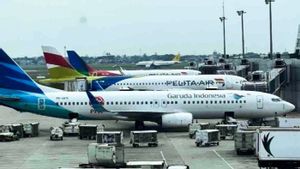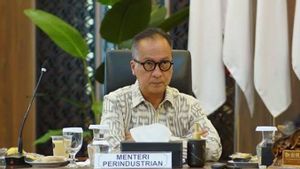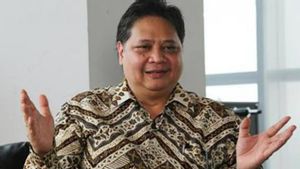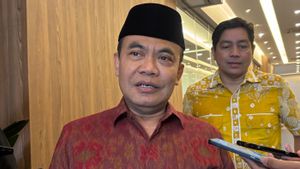JAKARTA - Productivity in the manufacturing industry sector continues to grow in line with new demand in the market which is also increasing. This expansion phase is based on the results of the S&P Global survey through the Indonesian Manufacturing Purchasing Managers' Index (PMI) data in April 2022, which was at the level of 51.9, an increase compared to March which reached the position of 51.3.
"Together with the strengthening of the export contribution, this increase in manufacturing PMI is also believed to be able to support the solid performance of national economic growth in the second quarter of 2022," said Industry Minister Agus Gumiwang Kartasasmita in a statement, Thursday 5 May.
Agus explained, referring to the S&P Global report, the manufacturing industry sector in Indonesia still showed expansion at a faster pace in April. This accelerated improvements in economic conditions while at the same time boosting employment and purchasing activity.
"So, the PMI results represent the improvement in business conditions of all manufacturing sectors in Indonesia for eight consecutive months, with the fastest improvement rate since last January," he said.
In fact, in general, business players in the manufacturing industry in Indonesia are still optimistic about the pace of expansion in the next period. This is also supported by strengthening public consumption and demand for exports, which are expected to remain on a positive trend in the future.
"It is hoped that the sustainability of increasing production capacity in the manufacturing industry sector will be maintained, as it is supported by the strengthening of demand during Ramadan and Eid al-Fitr which is in line with the policy of joint leave and Lebaran homecoming," said Agus.
The Minister of Industry added that according to President Joko Widodo's direction, capital expenditures and services should be directed to domestic products. The potential for goods and capital expenditures as well as services in the central government is IDR 526 trillion, while in regional governments it is IDR 535 trillion.
"That is, a total of more than Rp1,000 trillion. Meanwhile, the budget for SOEs is IDR 420 trillion. All of these figures are very large, which needs to be spurred on to purchase domestic products so that our industry can grow and develop. So, don't eliminate or reduce as much as possible for the purchase of imported products," he explained.
Agus said, accelerate the downstream industrial process carried out in the country. Areas that have mineral resources are encouraged to immediately build smelters.
"In addition, regions that produce chocolate or coffee, for example, are encouraged to increase their added value through industrial downstreaming because it will also be able to create large job opportunities," he added.
Responding to the results of the Indonesian manufacturing PMI survey in April, Jingyi Pan as Economics Associate Director of IHS Markit said the improvement in Indonesia's economic conditions was evident from the increase in demand and production in the manufacturing sector which was getting stronger.
"In addition, there was an increase in purchasing activity, and most importantly a solid expansion in the number of workers who also continued to show confidence from several companies in the near future," he explained.
Indonesia's manufacturing PMI in April was able to surpass the manufacturing PMI of China (46.0), Russia (48.2), Malaysia (51.6), Taiwan (51.7), and Vietnam (51.7).
The English, Chinese, Japanese, Arabic, and French versions are automatically generated by the AI. So there may still be inaccuracies in translating, please always see Indonesian as our main language. (system supported by DigitalSiber.id)













